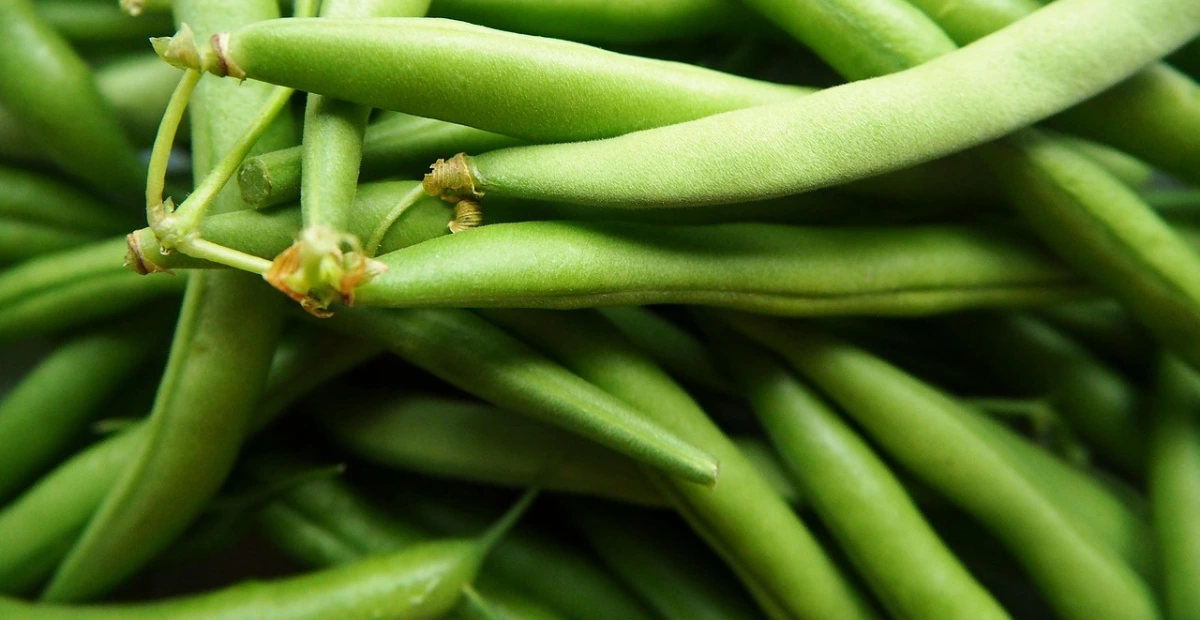Growing wax beans in your garden can be one of the most rewarding experiences, especially when you get to enjoy their tender, sweet flavor in your meals. Whether you’re an experienced gardener or just starting out, growing wax beans is straightforward with the right knowledge and tools. This guide will walk you through seven essential tips that will help you grow a successful crop of wax beans, ensuring a bountiful harvest. If you follow these simple yet powerful steps, you’ll soon be harvesting fresh beans from your own garden.
advertisement
Table of Contents
Introduction: The Reward of Growing Wax Beans
There’s something special about growing your own food, especially when it’s as easy and delicious as wax beans. Imagine stepping outside your garden and picking bright yellow beans right off the vine—there’s nothing quite like the taste of homegrown produce. Wax beans are not only a favorite among gardeners for their vibrant color and flavor but also for their low-maintenance nature. Whether you’re looking to add a new vegetable to your garden or start growing from scratch, wax beans are the perfect choice.
advertisement
But how do you ensure your wax beans grow successfully? In this article, you’ll learn seven essential gardening tips to get the most out of your wax bean crop. From choosing the right location to managing pests, we’ve got everything covered. Let’s dive into these expert tips that will help you grow wax beans with confidence.
1. Choosing the Right Location for Wax Beans
Why Location Matters for Wax Beans
If you want to grow healthy, vibrant wax beans, location is key. Wax beans thrive in specific conditions that support their growth. Let’s break down the essential elements of a perfect location for growing your wax beans.
- Sunlight: Wax beans require a lot of sunlight to thrive—about 6-8 hours of direct sunlight each day. Choose a spot in your garden that receives plenty of sunlight throughout the day. The more sunlight your wax beans get, the better your crop will perform.
- Soil Quality: Wax beans grow best in loose, well-drained soil. Sandy loam or loamy soil is ideal, as it allows the roots to spread and absorb nutrients efficiently. Check the pH level of your soil; wax beans prefer a slightly acidic to neutral pH (around 6.0-7.0).
- Protection from Wind: While wax beans enjoy sunlight, they don’t do well in areas with strong, gusty winds. High winds can damage your plants, so choose a sheltered location or use windbreaks to protect them.
Key Points:
- Ensure at least 6-8 hours of sunlight
- Choose well-drained, nutrient-rich soil
- Protect plants from strong winds
advertisement
2. Preparing the Soil for Wax Beans
How to Prepare Your Soil
Before planting, it’s crucial to prepare the soil properly. Good soil preparation ensures your plants have the best environment to grow. Here’s how to get your soil ready for planting wax beans.
- Soil Aeration: Aerating the soil by turning it with a garden fork or shovel helps to break up compacted soil and allows the roots to grow freely. Soil that’s too compacted can restrict root growth and water movement, which may harm your plants.
- Soil Fertilization: Wax beans don’t require too much fertilizer, but enriching the soil with compost or well-rotted manure can significantly boost plant health. Organic matter improves the soil structure and provides essential nutrients.
- Weed Control: Weeds compete with your wax beans for water, nutrients, and sunlight. Prior to planting, remove any existing weeds and consider mulching to suppress new weed growth. Mulch also helps retain moisture, reducing the need for frequent watering.
Key Points:
- Aerate the soil to promote root growth
- Add organic matter like compost or manure
- Use mulch to suppress weeds and retain moisture
3. Planting Your Wax Beans
Best Time to Plant Wax Beans
Timing is everything when planting wax beans. Wax beans are a warm-season crop, so it’s important to wait until the soil temperature is right for planting.
advertisement
- Soil Temperature: Wax beans need a warm environment to grow, so wait until the soil temperature reaches at least 60°F (15°C) before planting. You can use a soil thermometer to measure this. Planting too early in cold soil can stunt growth and increase the risk of disease.
- Direct Sowing: Wax beans should be planted directly in the ground as they don’t transplant well. When planting, sow the seeds 1 to 1.5 inches deep and space them about 2-3 inches apart. Plant in rows with 18-24 inches between each row to give the plants enough room to grow.
- Spacing: Proper spacing is crucial for optimal growth. Too close, and the beans will compete for sunlight, water, and nutrients; too far apart, and you may not get the desired yield.
Key Points:
- Wait until the soil reaches 60°F to plant
- Space seeds 2-3 inches apart
- Avoid transplanting; direct sowing is best
4. Watering and Irrigation Tips for Wax Beans
How to Water Wax Beans Correctly
Watering is an essential factor in the success of your wax bean crop. You need to keep your soil consistently moist without overwatering, which can lead to root rot and other issues. Here’s how to keep your wax beans hydrated without stressing them out.
advertisement
- Even Moisture: Wax beans prefer moist soil, but it should never be soggy. Water deeply and consistently, aiming to keep the soil evenly moist.
- Drip Irrigation: A drip irrigation system or soaker hoses are ideal for watering your wax beans. These methods deliver water directly to the root zone, reducing water waste and preventing the foliage from getting wet. Wet leaves can lead to fungal diseases, which can damage your plants.
- Watering Time: Water your plants early in the morning to allow the soil to dry throughout the day. Avoid watering in the evening, as this can increase the likelihood of fungal problems.
Key Points:
- Water deeply but infrequently
- Use drip irrigation to target the roots
- Water in the morning to prevent disease
5. Supporting Your Wax Beans
Why You Should Use Supports for Wax Beans
Even though wax beans are considered a bush variety, they still benefit from some support, especially when they start to grow taller. Supporting your plants helps keep them upright and prevents damage from heavy rains or wind.
- Stakes or Trellises: Use stakes or trellises to help your wax beans grow vertically. This not only makes harvesting easier but also reduces the risk of pest infestation and fungal diseases that thrive in dense, wet foliage.
- Spacing: Overcrowding can lead to poor air circulation, making your plants more susceptible to diseases. Provide enough space between plants for proper airflow, which will help reduce disease pressure.
advertisement
Key Points:
- Use stakes or trellises to support the plants
- Avoid overcrowding to ensure proper air circulation
6. Managing Pests and Diseases
How to Protect Your Wax Beans from Pests
Like all garden crops, wax beans are susceptible to pests and diseases. However, with the right approach, you can keep most pests at bay.
- Natural Pest Control: Use organic pesticides like neem oil or insecticidal soap to control pests. These solutions are effective and less harmful to beneficial insects in your garden.
- Crop Rotation: To prevent pests and diseases from building up in the soil, practice crop rotation. Avoid planting wax beans in the same spot each year to minimize the risk of soil-borne pests.
- Regular Inspection: Inspect your plants regularly for pests such as aphids, spider mites, and bean beetles. Catching a problem early makes it easier to manage before it spreads.
Key Points:
- Use organic pest control methods
- Rotate crops annually to reduce pest buildup
- Regularly inspect for pests and diseases
7. Harvesting and Storing Wax Beans
When and How to Harvest Wax Beans
The timing of your harvest is crucial to ensuring your beans are tender and flavorful. You want to pick them at the right stage to avoid over-mature beans that become tough and less tasty.
advertisement
- Harvest Time: Wax beans are typically ready to harvest about 50-60 days after planting. The best time to harvest is when the beans are tender and snap easily when bent, but still firm and not overly mature.
- Harvesting Method: Gently snap the beans off the vine using your fingers or pruning shears. Be careful not to damage the plant, as this can affect future growth.
Storing Your Wax Beans
Proper storage helps preserve the flavor and nutrients of your wax beans.
- Freezing: If you’ve harvested more beans than you can eat immediately, freezing is an excellent option. To freeze wax beans, blanch them first by placing them in boiling water for 2-3 minutes and then plunging them into ice water. After they’ve cooled, place them in freezer bags or containers.
- Canning: You can also can wax beans for long-term storage. Be sure to follow proper canning procedures to ensure food safety.
Key Points:
- Harvest when beans are tender but firm
- Store beans in the freezer or can them for long-term use
Conclusion
Growing wax beans is a simple yet rewarding experience that anyone can enjoy. By following these seven essential tips, you’ll be on your way to cultivating a bountiful harvest of fresh, delicious beans. Whether you’re planting them for the first time or looking to perfect your growing techniques, this guide provides the necessary steps to ensure your wax beans thrive. Now that you have the tools and knowledge to succeed, get out there and start planting! Enjoy the fruits of your labor as you harvest your own homegrown wax beans.
FAQ Section
1. How long does it take to grow wax beans?
It typically takes about 50-60 days from planting to harvest, depending on weather and growing conditions.
2. How do I protect wax beans from pests?
Use natural remedies like neem oil or insecticidal soap, and practice crop rotation to reduce pest problems.
advertisement
3. Can I grow wax beans in containers?
Yes, wax beans can be grown in containers, as long as they have enough space, good drainage, and sufficient sunlight.
4. What’s the best fertilizer for wax beans?
Wax beans benefit from organic fertilizers like compost or well-rotted manure. These provide the necessary nutrients without over-fertilizing.
5. When should I harvest my wax beans?
Harvest wax beans when they are tender but firm, usually around 50-60 days after planting.


